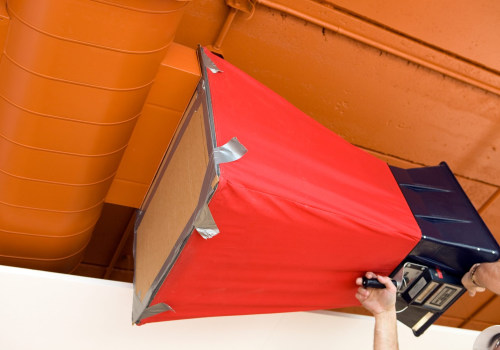When it comes to duct insulation, the appropriate R-value depends on the location of the ducts. Generally, R-4 to R-8 are the recommended values for ducts located inside the insulated part of a home. If the ducts are in an uninsulated or unfinished basement, then no insulation up to a value of R-4 will suffice. This can lead to insufficient insulation, not meeting standards, or not being as efficient as they were designed.
In an effort to address these inefficiencies, the commercial IECC and ASHRAE 90.1 introduced a change to the R-12 code. Specifically, these codes require that commercial ducts in unconditioned spaces (according to IECC) and outdoor spaces (according to IECC &, ASHRAE 90), in climate zones 5-8, be insulated with R-12 insulation. The Microlite FSK duct wrap comes with an FSK (foil scrim kraft) coating, designed to ensure a closed system that prevents moisture from entering and allows condensation to be controlled. To achieve an R-value of R-6, R-8, or even R-12 for your duct insulation, you'll need to have an idea of the R-insulation values that these materials add.
Most ducts require insulation with a specific R-value; this applies to both supply and return ducts. HVAC Insulation Board Duct Coating External Duct Insulation Flexible Duct Insulation Accessories The source: Insulation Intel. The supply and return ducts of the attics shall be insulated with an R value not lower than R-8 for ducts of 76 mm (3 inches) in diameter or more, and not lower than R-6 for ducts of less than 76 mm (3 inches) in diameter. As a result, commercial ducts in outdoor, unconditioned spaces in climate zones 5-8 often require much more energy to maintain constant temperatures than those in zones 1-4.As such, installers have had to apply a double layer of insulation to achieve the required thermal performance. When it comes to choosing the right R-value for your duct insulation, it's important to consider the location of your ducts and the climate zone you're in.
In general, R-4 to R-8 are the recommended values for ducts located inside insulated parts of a home. For uninsulated or unfinished basements, no insulation up to a value of R-4 will suffice. This can lead to inefficient insulation that doesn't meet standards or provide optimal performance. The commercial IECC and ASHRAE 90.1 codes introduced a change requiring R-12 insulation for commercial ducts in unconditioned spaces (according to IECC) and outdoor spaces (according to IECC &, ASHRAE 90), in climate zones 5-8.The Microlite FSK duct wrap comes with an FSK (foil scrim kraft) coating designed to create a closed system that prevents moisture from entering and allows condensation control.
To achieve an R-value of R-6, R-8, or even R-12, you'll need to understand the R-insulation values that these materials add to your duct insulation. Most ducts require insulation with a specific R-value, which applies to both supply and return ducts. HVAC Insulation Board Duct Coating External Duct Insulation Flexible Duct Insulation Accessories The source: Insulation Intel states that supply and return ducts of attics should be insulated with an R value not lower than R-8 for ducts of 76 mm (3 inches) in diameter or more, and not lower than R-6 for ducts of less than 76 mm (3 inches) in diameter. Due to this requirement, commercial ducts in outdoor, unconditioned spaces in climate zones 5-8 often require more energy than those in zones 1-4 to maintain constant temperatures. As such, installers have had to apply a double layer of insulation to achieve the required thermal performance.



